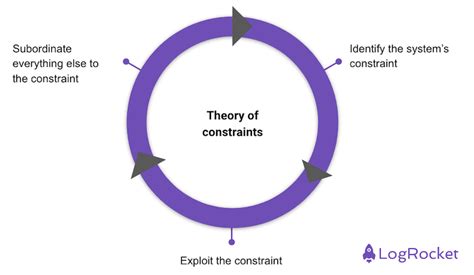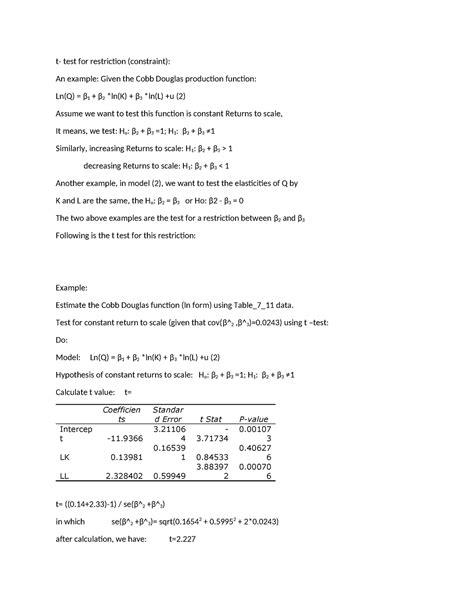A Constraint In A Decision Is A Restriction Placed On

When making decisions, especially in complex and real-world scenarios, constraints play a pivotal role in shaping the outcome. A constraint is essentially a limitation or a boundary that confines the available options and narrows down the decision-making process. In this in-depth analysis, we will explore the concept of constraints, their types, and their profound impact on decision-making.
Understanding Constraints

Constraints are restrictions or rules that govern the decisions we make. They act as guiding principles, ensuring that our choices are feasible, practical, and aligned with our goals and resources. These constraints can be intrinsic, arising from the nature of the problem itself, or extrinsic, imposed by external factors or stakeholders.
For instance, consider the decision to plan a vacation. A key constraint might be the available budget, which limits the choices of destinations and activities. Similarly, in business, constraints could be financial, technical, or even regulatory, shaping the strategic decisions that organizations make.
Types of Constraints

Hard vs. Soft Constraints
Constraints can be classified as hard or soft. Hard constraints are non-negotiable and must be adhered to. Violating a hard constraint often leads to undesirable or even catastrophic outcomes. For example, in project management, a deadline is a hard constraint; missing it could result in significant financial losses or damage to reputation.
On the other hand, soft constraints are more flexible. They provide guidance but can be relaxed or adjusted under certain circumstances. For instance, while customer satisfaction is an important consideration for a business, it is generally a soft constraint; while striving for high satisfaction is desirable, it may be balanced against other factors like cost-efficiency.
External vs. Internal Constraints
Constraints can also be categorized as external or internal. External constraints are imposed by factors outside our direct control, such as government regulations, market conditions, or supplier limitations. For example, a company’s ability to expand its operations might be constrained by local zoning laws.
In contrast, internal constraints are those that we have some degree of control over. These can include organizational policies, resource allocation, or team capabilities. For instance, a company's decision to adopt a new technology might be constrained by its IT department's expertise and available resources.
The Impact of Constraints on Decision-Making
Constraints significantly influence the decision-making process, often in profound ways. They help us prioritize, focus our efforts, and make trade-offs. By defining the boundaries within which decisions must be made, constraints guide us toward practical and feasible solutions.
However, the presence of constraints can also present challenges. They can limit creativity and innovation, particularly if they are not carefully considered or if they are overly restrictive. Effective decision-making requires a delicate balance between adhering to constraints and exploring innovative solutions within those boundaries.
Case Study: Supply Chain Management
Consider the complex world of supply chain management, where decisions are influenced by a myriad of constraints. For instance, a manufacturing company might face constraints such as:
- Production Capacity: The maximum output that can be achieved with the current infrastructure and workforce.
- Raw Material Availability: The limited supply of raw materials, which could be influenced by external factors like natural disasters or political unrest.
- Transportation Costs: The expense of moving goods, which could be affected by fuel prices, distance, and transportation methods.
- Customer Demand: The need to balance production with the actual demand for the product, avoiding both overproduction and shortages.
These constraints shape the decisions made in supply chain management, influencing everything from production planning to inventory management and distribution strategies.
Strategic Use of Constraints
While constraints may initially seem like limitations, they can also be leveraged as strategic tools. By understanding and effectively managing constraints, decision-makers can:
- Enhance efficiency: Constraints can guide us toward the most efficient use of resources, minimizing waste and maximizing output.
- Mitigate risks: Certain constraints, such as safety regulations or quality standards, help reduce the likelihood of adverse events or product failures.
- Foster innovation: Sometimes, constraints can inspire creative thinking and the development of innovative solutions that might not have been considered otherwise.
- Focus attention: By narrowing down the decision space, constraints help decision-makers focus on the most critical aspects of a problem, simplifying the decision-making process.
Example: The Benefits of Time Constraints
Time constraints, often seen as a hindrance, can actually drive productivity and creativity. For instance, consider the “Pomodoro Technique,” a time management method where work is divided into focused “sprints” with short breaks. This technique uses time constraints to enhance focus and productivity, with numerous studies backing its effectiveness.
Conclusion

Constraints are an integral part of decision-making, shaping the choices we make and guiding us toward practical solutions. While they may present challenges, they also offer opportunities for strategic thinking, innovation, and efficient decision-making. By understanding and effectively managing constraints, we can navigate complex decisions with confidence and success.
What is the difference between a hard constraint and a soft constraint?
+Hard constraints are non-negotiable and must be adhered to, while soft constraints provide guidance but can be relaxed under certain circumstances. Violating a hard constraint often leads to undesirable outcomes, while soft constraints can be adjusted based on the situation.
How can constraints be used strategically in decision-making?
+Constraints can enhance efficiency by guiding us toward the most effective use of resources. They can also mitigate risks, foster innovation, and focus our attention on critical aspects of a problem, simplifying the decision-making process.
Are there any benefits to having constraints in decision-making?
+Absolutely! Constraints can help us make more efficient and focused decisions. They can also inspire creativity and innovation by challenging us to find solutions within the given boundaries. Additionally, constraints can mitigate risks and ensure our decisions align with our goals and resources.


